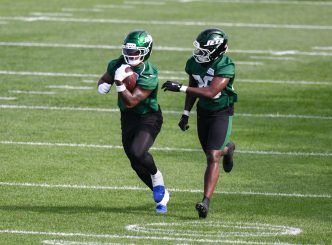In July 2023, the Washington Commanders were sold for a record-breaking $6.05 billion to a group led by Josh Harris, marking the highest price ever paid for a North American sports franchise. Just one year later, in 2024, the team’s valuation climbed to $7.3 billion according to Forbes, $7.65 billion per Sportico, and $7.8 billion by CNBC—a roughly 20-30% increase in a single year and nearly double their $3.5 billion valuation in 2020. This meteoric rise is astonishing given the franchise’s history of dysfunction, including a toxic workplace scandal, fan alienation, and only two playoff appearances since 2005. The Commanders’ financial ascent highlights the NFL’s economic juggernaut and the transformative impact of new ownership, even as the team struggles to reclaim its on-field relevance.
A Troubled Past, A Valuable Present
The Commanders’ valuation trend from 2020 to 2024 tells a story of resilience:
- 2020: $3.5 billion (Forbes)
- 2021: $3.9 billion (Forbes)
- 2022: $4.8 billion (Forbes)
- 2023: $5.6 billion (Forbes, pre-sale)
- 2024: $7.3 billion to $7.8 billion (Forbes, Sportico, CNBC)
This growth occurred against a backdrop of turmoil under former owner Daniel Snyder, whose 24-year tenure was marred by controversies, including a 2021 NFL investigation into workplace misconduct, allegations of financial impropriety, and a name change from the Redskins to Commanders amid public pressure. The team’s on-field performance was equally dismal, with a 7-10 record in 2022 and an 8-8-1 finish in 2023, followed by a 4-13 campaign in 2024 under new coach Dan Quinn. Yet, the franchise’s valuation has nearly doubled since 2020, defying its lack of postseason success and off-field scandals.
The Ownership Effect
The 2023 sale to Josh Harris, a billionaire with stakes in the NBA’s Philadelphia 76ers and NHL’s New Jersey Devils, was a turning point. The $6.05 billion purchase price, which eclipsed the previous record set by the Denver Broncos’ $4.65 billion sale, reflected the NFL’s skyrocketing franchise values and Washington’s untapped potential. Harris’ group, which includes NBA legend Magic Johnson, brought a fresh vision, promising to rebuild fan trust and modernize the franchise. The sale alone reset the team’s market value, and subsequent investments in stadium plans and fan engagement have fueled further growth.
The Commanders’ revenue, estimated at $600 million in 2023 by CNBC, is among the NFL’s highest, driven by a loyal fanbase in the Washington, D.C., metro area—a top-10 U.S. market—and shared NFL media deals worth $12.4 billion annually through 2032. Unlike the Cowboys, whose AT&T Stadium generates year-round income, the Commanders’ outdated Northwest Stadium (formerly FedExField) is a financial drag. Yet, plans for a new $2 billion stadium, potentially opening by 2030, have boosted investor confidence, contributing to the valuation spike. Posts on X reflect this optimism, with one user noting, “Commanders went from Snyder’s mess to a $7.8 billion juggernaut in a year. Harris is cooking.”
NFL Economics and Market Dynamics
The Commanders’ valuation boom underscores a broader trend: NFL franchise values are increasingly detached from on-field performance. The league’s revenue-sharing model, which evenly distributes media and licensing income, ensures financial stability for all teams. Washington benefits from this, but its proximity to a wealthy, sports-hungry market amplifies its potential. Sponsorship deals, including a $15 million annual agreement with Northwest Bank, and rising ticket sales under Harris’ fan-friendly initiatives, have further padded the bottom line.
The team’s rebranding to the Commanders in 2022, while divisive, opened new merchandising opportunities. Sales of jerseys featuring young quarterback Jayden Daniels, the 2024 No. 2 overall draft pick, have surged, mirroring the Cowboys’ ability to monetize star players like Dak Prescott. Despite a 4-13 record in 2024, Daniels’ promise and the team’s aggressive roster overhaul—adding veterans like Bobby Wagner—have kept fans engaged, with attendance up 10% from 2023.
Why the Past Doesn’t Matter
The Commanders’ financial rise despite decades of dysfunction highlights the NFL’s unique economic structure. Scandals that might cripple other businesses, like Snyder’s workplace allegations, were overshadowed by the league’s financial momentum and the promise of new leadership. Fans, once alienated by Snyder’s mismanagement, have returned in droves, with season ticket waitlists growing for the first time in 15 years. The team’s social media following has also spiked, with 1.5 million new X followers since the sale, reflecting renewed excitement.
Analysts like ESPN’s Mina Kimes have marveled at the Commanders’ turnaround, noting, “They were a PR disaster for years, but the NFL’s money machine and a new owner flipped the script.” The franchise’s valuation growth outpaces many peers, including the Philadelphia Eagles ($7.1 billion) and Chicago Bears ($6.8 billion), despite those teams’ stronger recent performance.
The Road Ahead
As the Commanders’ valuation nears $8 billion, their future looks bright. Harris’ plans for a new stadium, potentially funded by public-private partnerships in D.C., Maryland, or Virginia, could push the team’s value toward $10 billion by 2030. On the field, Daniels’ development and Quinn’s defensive schemes offer hope for a playoff run, though fans remain cautious after years of disappointment. One X post summed it up: “$7.3 billion and counting, but can we win a playoff game?”
The Commanders’ story mirrors the Cowboys’ in its defiance of conventional wisdom: success in the NFL’s financial arena doesn’t require Super Bowl rings. With a new owner, a reenergized fanbase, and the NFL’s economic tailwinds, Washington’s valuation surge proves that even a troubled franchise can become a financial powerhouse. For now, the Commanders are cashing in on hope, leaving fans to dream of a day when their on-field product matches their balance sheet.






